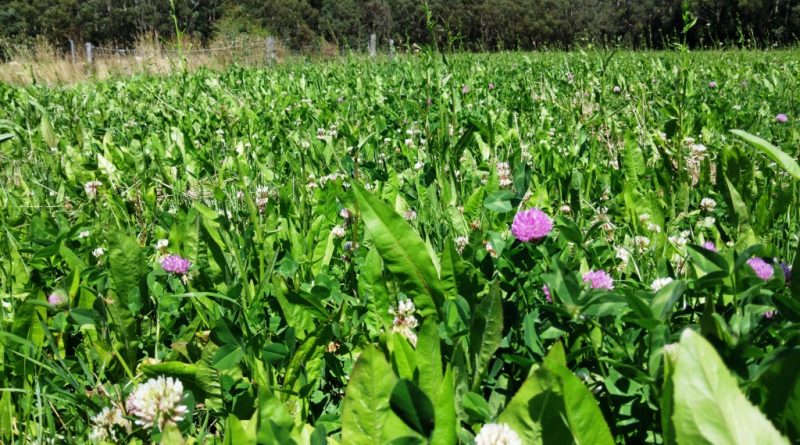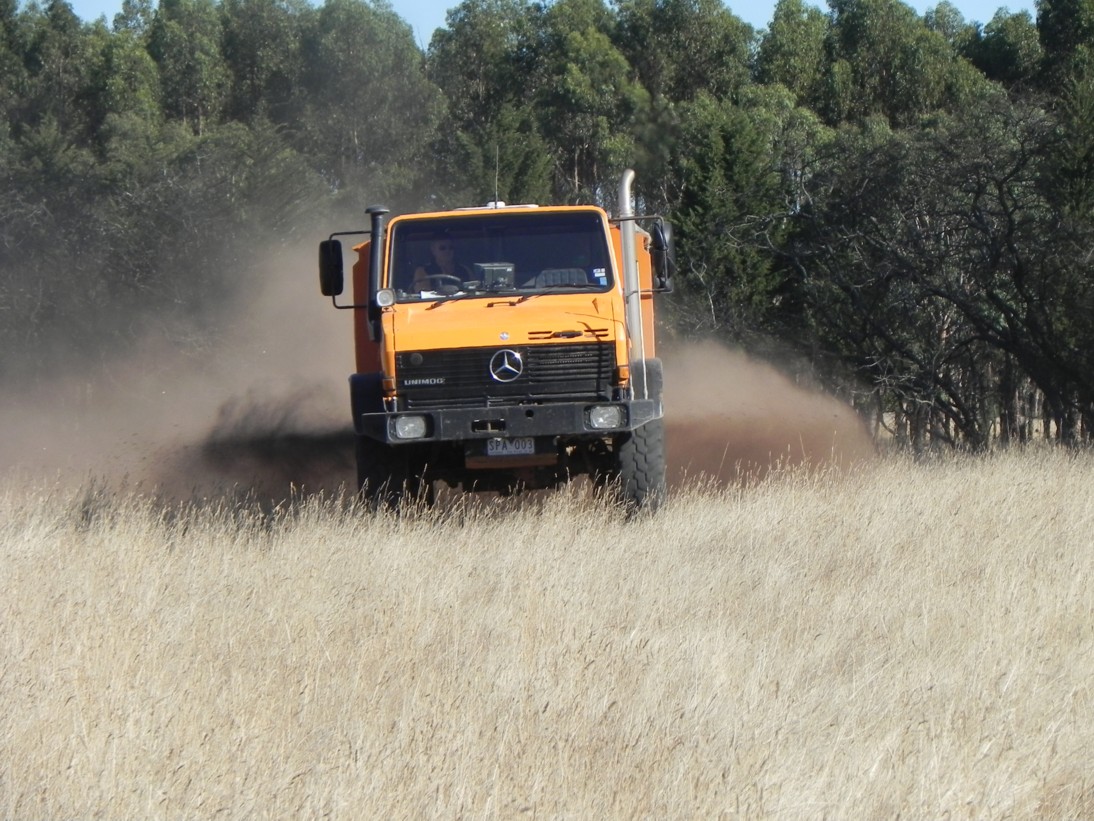Uncertain permanence makes soil carbon credits risky
By Patrick Francis
A long-term project on 11 central New South Wales farms has provided more science based data around the uncertainty surrounding soil carbon permanency. Like other science based trials rather than anecdotal measurements the results demonstrate serious risk for farmers trading in carbon credits associated with soil methodologies.
The latest trial results are particularly relevant because the soil carbon measurements were undertaken over 10 years on farms being managed under different approaches to support soil carbon enhancement.
The NSW Department of Primary Industries CAMBI project results were presented at a webinar on 13 February 2024 by Warwick Badgery and Aaron Simmons. The trial started in 2009 as a pilot to find out if a soil carbon trading system could be implemented. Farmers filed expressions of interest indicating bids for soil carbon increase over time by changing management. Eleven farms were chosen and these were in a confined region with similar soil types and rainfall pattern and had relatively low levels of soil carbon (1.2 – 1.8% SOC). In other words an existing level of carbon where it was considered predictable that by changing management soil carbon would increase.
The farmers involved used cropping and grazing management that Badgery and Simmons described as:
* Low input – conventional management with relatively low rates of synthetic fertilisers and chemicals (herbicides and insecticides) applied.
* Regenerative – embraced a soil health approach with minimal or no synthetic herbicides or chemicals.
* Hi input – conventional management with relatively high rates of synthetic fertilisers and recommended chemicals applied.
Over a five year period to 2017 all 11 farms saw increases in soil carbon with 9951 tonnes CO2e stored over 748ha. This amount was 2000t CO2e more than predicted. The soil carbon increases predicted from the farming methods and inputs management changes correlated closely with the actual rate of change after five years, table 1.
By 2017 the researchers were reasonably confident that changing management to support soil carbon sequestration was a credible proposition especially where farms started with low soil carbon content. But they also felt the success needed to be put in context of longer term carbon sequestration plus whole farm emissions changes had to be considered if carbon credits were to be traded.
So in 2022 the researchers returned to the 11 farms to find out what happened to soil carbon levels. They already had data from a Condobolin farming systems soil carbon trial from 1998 to 2014. It showed all cropping management methods increasing soil carbon for 12 years only to see it drop alarmingly in 2013 at or below what is was present in 1998.
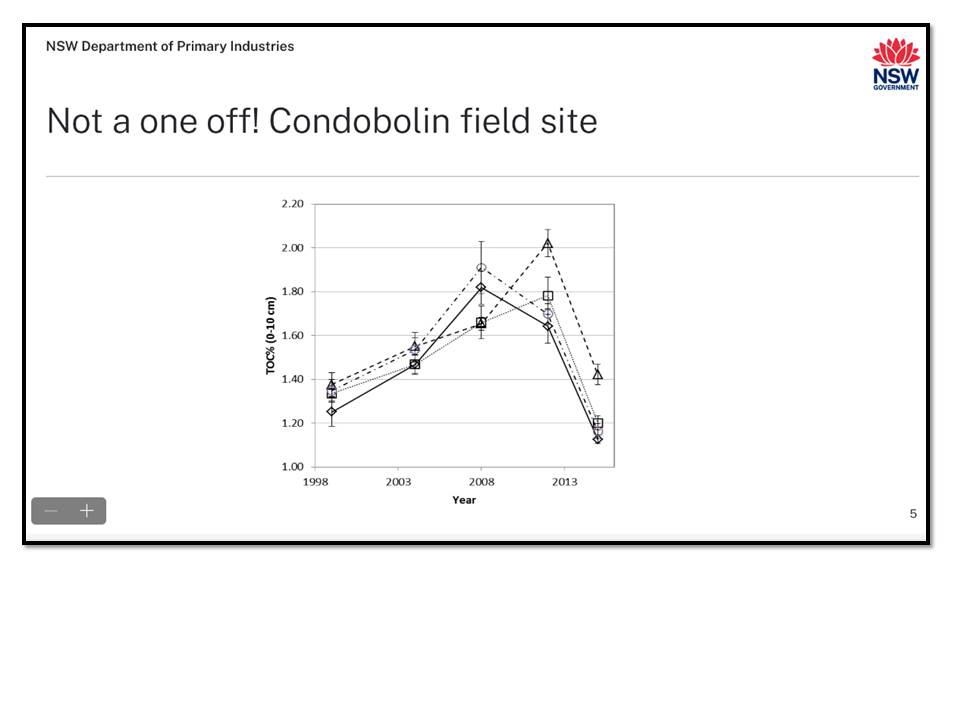
Figure 1: When soil organic carbon levels are measured over the moderate period of time the early increases from management changes can mysteriously disappear.
The problem with attributing soil carbon increase to management changes is according to Simmons the failure to recognise the major drivers behind change. His hierarchy of soil carbon change is dominated by seasonal conditions followed by soil type especially clay content and least influential management employed by the farmer, figure 2.
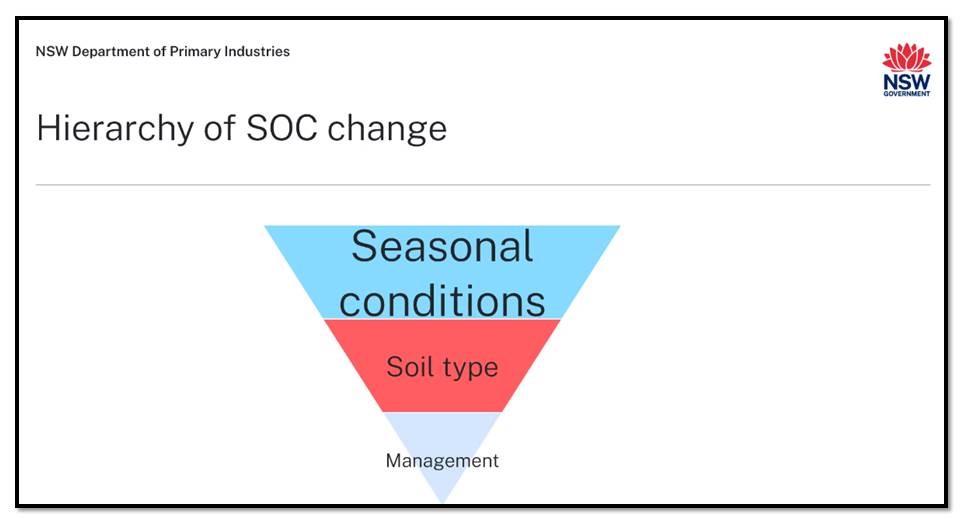
Figure 2: Seasonal conditions have the greatest impact on changes to soil organic carbon level, management is the least influential.
This hierarchy was supported in a webinar in August 2019 by former NSW Agriculture soil scientist Dr Susan Orgill. She presented evidence that soil carbon was not necessarily increased when management changed for example from continuously grazed pastures to rotationally grazed pastures. Orgill concluded that in some systems soil organic carbon does not increase despite best management for a range of reasons:
* Soil type and climate are the major drivers of pasture production and decomposition.
* Poor crop and pasture nutrition.
* Water limited environment.
* Large background SOC levels.
* Spatial variability.
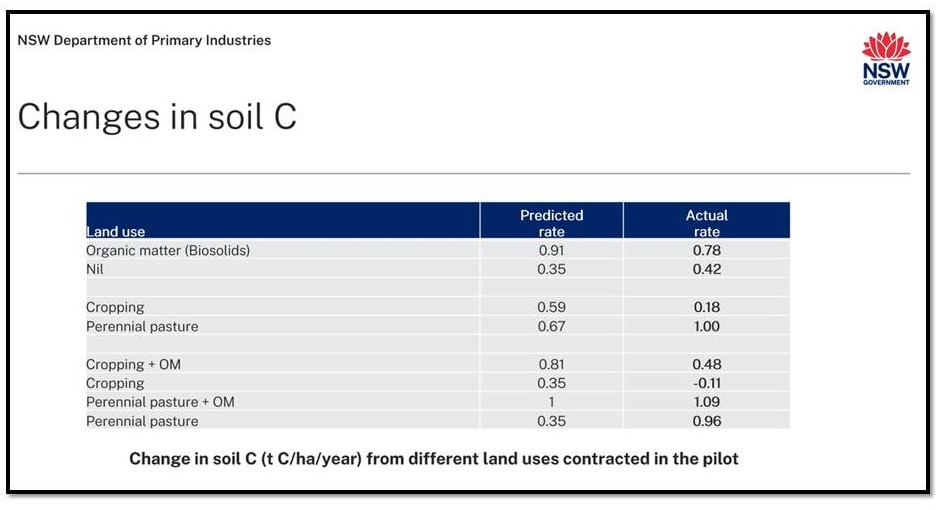
Table 1: Predicted and actual changes in soil carbon over five years across the 11 farms participating in the CAMBI trial. Source: NSW Dept of Primary Industries.
Given this hierarchy where management has the least impact what happened to soil carbon on the 11 farms is no surprise. Between 2017 and 2022 the soil organic carbon level returned to the levels of 2012 irrespective of management applied to the paddocks, figure 3.
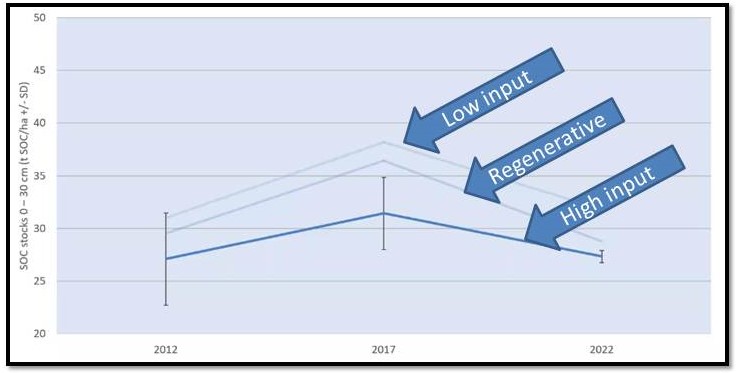
Figure 3: Irrespective of the farm management employed soil carbon levels declined after 2017 and by 2022 were close to the level in the paddocks in 2012. Source: NSW Dept of Primary Industries.
There are other examples of how seasonal conditions impact soil carbon percentage over time. Soil scientist Elaine Mitchell provided an interesting illustration for why soil carbon varies due to climate. Her testing on three different soil types between 2014 and 2020 showed that soil organic carbon levels declined due to enormous seasonal changes at the site, from high rainfall to drought conditions, figure 4. She explained that irrespective of how much pasture or crops is growing soil carbon is constantly consumed by soil microorganisms. So in dry times when little soil carbon is being replaced the microorganisms consume soil carbon at a greater rate than the plants can replace it through organic matter and liquid carbon pathways, and soil carbon declines.
Mitchell also showed that on one site when re-sampled in 2022 after two years of above average rainfall soil carbon had increased and was back close to the level it was at in 2014, figure 4 lower chart. This data reflects exactly what the hierarchy of SOC describes.
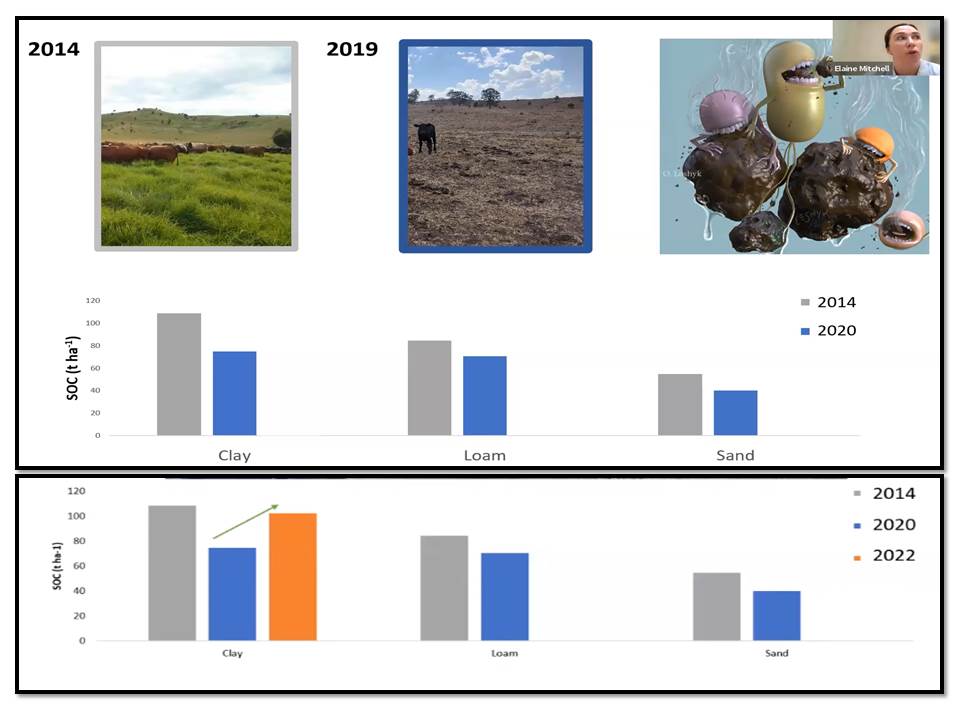
Figure 4: Elaine Mitchell showed that soil organic carbon declined on three different soil types between 2014 and 2020. But 2022 data on the clay soil site saw SOC increase again to what it was in 2014. Source: Atlas Carbon webinar 21 November 2023.
The experience with soil carbon sequestration on northern Australia’s grazing land was addressed by Beverley Henry in an April 2023 webinar. In addressing the question does better land condition indicate higher soil carbon stocks she said the correlation was not strong.
“Paired site studies showed no strong correlation between land condition score and soil organic carbon stocks. But improved land condition is associated with higher average pasture biomass and higher ground cover”, figure 5.

Figure 5: Soil organic carbon measurements in paired sites did not show a consistent relationship with land condition. Source: Beverley Henry webinar April 2023.
According to Henry improving land condition should always be a priority but as for it increasing soil carbon she agreed with Badgery and Simmons that site specific factors such as climate, soil type and baseline SOC were key factors in determining change.
In a MLA Donor Company project in partnership with Precision Pastures on a New England NSW farm the owners measured soil carbon at 12 sites in 2020 and again in 2022. They had changed livestock management from set stocking to rotational grazing and anticipated the soil carbon levels would increase. Like the 11 central NSW farms this property also had relatively low soil carbon, around 1.5%. In all but two paddocks soil carbon had declined by 0.3% when the 2022 measurements were taken, figure 6.
The explanation given for the decrease was “…high rainfall and oversaturation of soil…” which is in accordance with Badgery and Simmons hierarchy of soil organic matter change dominated by seasonal conditions, figure 2.
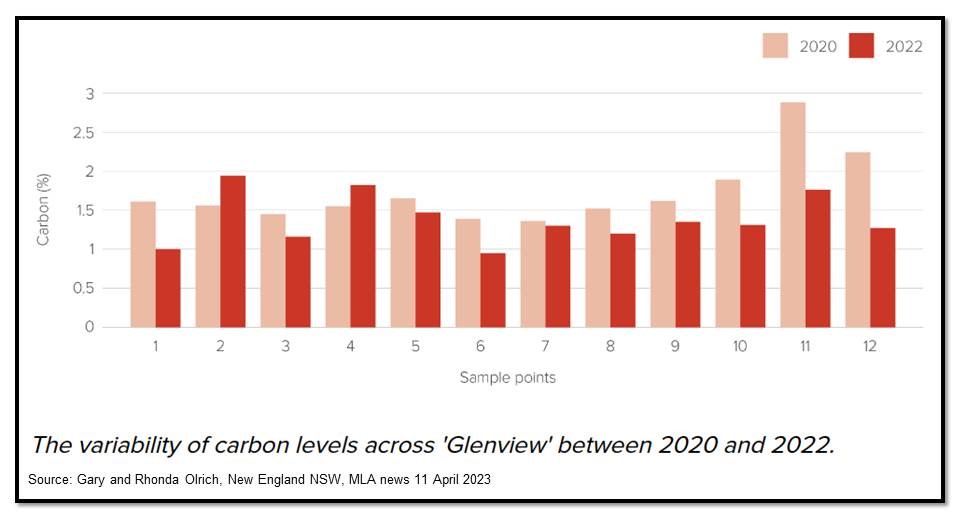
Figure 6: Soil carbon levels across a New England NSW farm between 2020 and 2022. Source: MLA news.
The CAMBI project authors summary of utilising soil carbon change to trade in carbon credits was cautionary. They contend that long term soil organic carbon sequestration due changing livestock management methods is not guaranteed. It is important to realise that soil carbon gains can also be lost regardless of the management methods used. The idea of trading soil carbon credits in their opinion is risky.
Not everyone in the soil carbon management arena agree with this assessment. The Precision Pastures consultants running the New England NSW MLA donor company project stated in an April 2023 MLA e-news article that livestock management can have “…a positive impact on the carbon cycle and carbon sequestration in the soil. …It’s a win-win for red meat producers – better soil, more livestock and higher carbon credits”.
The article reported that the project had shown a 1% increase in soil carbon down to 30cm, sequestering 156t/ha CO2 could have been CO2e as it converted this tonnage to 165 Australian Carbon Credits Units worth approximately $5000 per ha at the time. There was no mention of the hierarchy of soil organic carbon change as in figure 2 but referred to soil carbon improvements being “…heavily impacted by soil health including pH, toxicity and nutrient deficiency”.
Despite scientific data increasingly showing high variability in soil carbon level within and across farms over time, carbon market project supporters be they brokers or consultants invariably give the impression that increases will follow management change and carbon credits are there for the taking. The ultimate expression of this optimism must be Agriprove’s “Potential revenue opportunities for farmers from soil carbon” published in the 2021 Federal governments “Australia’s long term emissions reduction plan”. Across Australia’s agricultural zone under pastures and crops it showed annual increases in soil carbon are possible in every rainfall region from 300mm per year upwards, figure 7.
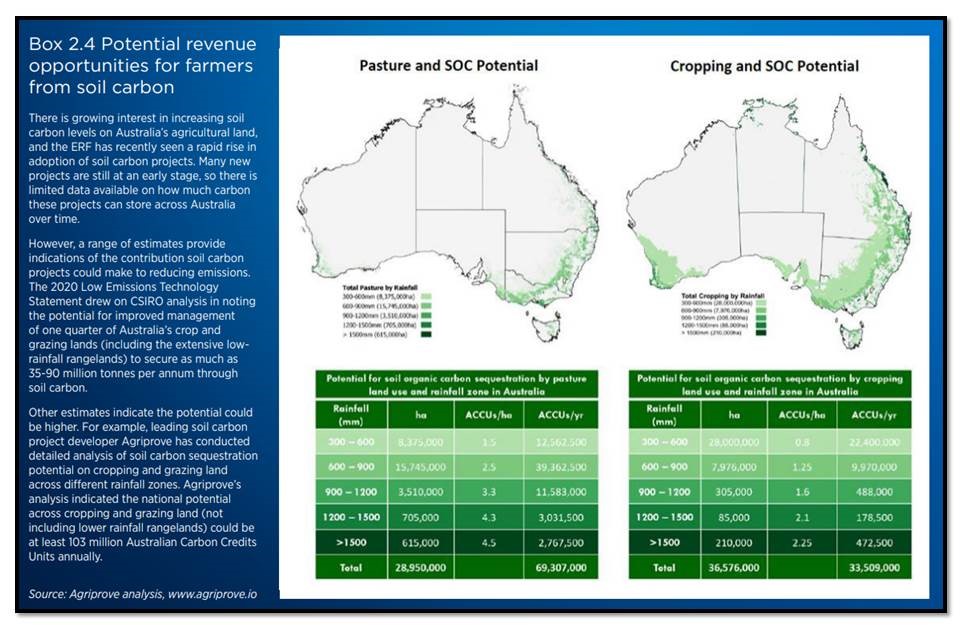
Figure 7: Agriprove’s analysis of potential revenue from soil carbon increases across the pasture and cropping zones suggests all farms can benefit.
Other examples of extreme optimism that changing livestock and cropping management will “automatically” increase soil carbon are found on most carbon farming consultants and brokers web sites:
* The Argyle Foods Group which as a network of farms across NSW and Queensland now has a carbon farming consultancy arm, Argyle Carbon. It states on its web site “Regenerative agriculture practices are used to increase soil organic carbon and generate registered Australian carbon credit units (ACCUs) across the Argyle Pastoral owned properties”.
* Select Carbon is a carbon farming consultancy business, it states on its web site “To increase soil carbon, you need to tip the balance so more carbon enters the soil through plant growth, residue management and other organic matter inputs (e.g. manure and composts) than leaves the soil. …Successfully executing a soil carbon project that delivers measurable changes involves making one or more practice changes and ensuring robust data collection for science-based outcomes”.
* Atlas Carbon, a carbon farming consultancy business states on its web site “What makes a high-potential soil carbon project candidate? * Willingness to adopt new practices that build soil carbon. * Ability to commit to a 25 year contract to maintain these practices as part of the government ERF requirements. * Over 500mm of annual rolling rainfall which is a strong indicator of soil carbon potential.”
Despite this optimism a recently published scientific review “Carbon farming: Are soil carbon certificates a suitable tool for climate change mitigation” by Carsten Paul et al came to a different conclusion. Published in the Journal of Environment Management, March 2023, the mostly German authors reviewed soil carbon trading in the European Union from three perspectives soil science, agricultural management and governance. In an infographic to summarise its finding the authors conclude soil carbon trading has so many issues associated with it across the three perspectives that it is unlikely to be a legitimate offsetting proposition, figure 8.
The most problems were with soil carbon increase permanence. On that issue the comments were “The build-up of SOC is fully reversible and typically slow in and fast out …permanence of SOC sequestration cannot be guaranteed”. That’s what the Australia scientific data shows.
The key point about management strategies to encourage and protect soil organic carbon that soil science researchers, carbon farming consultants and carbon brokers all agree on is that SOC has positive synergies associated with farms adapting to climate change, improves soil health and water holding capacity, improves productivity per hectare and increases above and below surface biodiversity.
These co-benefits of carbon farming strategies have been highlighted for many years by Australian scientists like Dr Richard Eckard and Dr Susan Orgill as critically important outcomes.
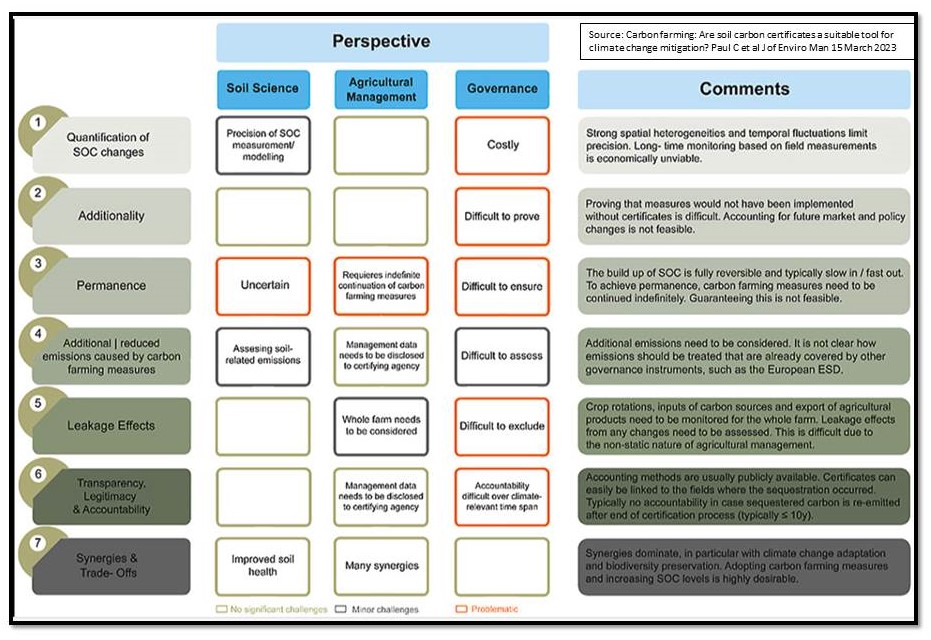
Figure 8: European researchers investigated the viability of soil carbon credit trading and found under three perspectives that permanence was problematic. Source: Paul C et al Journal of Environmental Management 15 March 2023.
References:
Argyle Pastoral | Argyle Foods Group
Improve soil health and business with a soil carbon project. (selectcarbon.com)
Our process helps graziers achieve their carbon potential | Atlas Carbon

